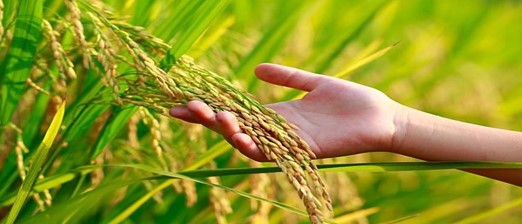
Rice Yield Success: Top IPM Methods
Share
Introduction
Integrated Pest Management (IPM) is a holistic approach to pest control that focuses on sustainable practices to minimize crop damage while maximizing In the realm of rice production, implementing effective IPM strategies is crucial for achieving optimal results.

Crop Rotation and Diversification
Rotating Rice with Legumes and Cereals: Alternating rice cultivation with legumes and cereals can improve soil fertility, reduce pest pressure, and increase overall yield potential.
Intercropping Rice with Pest-Repellent Plants: Planting pest-repellent plants alongside rice can deter pests and promote a healthier crop environment.
Incorporating Cover Crops for Soil Health: Utilizing cover crops can enhance soil structure, suppress weeds, and enhance nutrient availability for rice plants.

Biological Controls
Implementing Biological Pest Predators: Introducing natural enemies of pests, such as predatory insects or birds, can help regulate pest populations effectively.
Utilizing Microbial Inoculants: Applying beneficial microbes to the soil can boost plant health and improve disease resistance in rice crops.
Introducing Beneficial Insects: Releasing beneficial insects like ladybugs or lacewings can control pest populations without the need for chemical intervention.

Cultural Practices
Optimal Water Management: Maintaining proper irrigation practices based on the rice growth stage can prevent water-related issues and promote healthy plant development.
Timely Weed Control: Keeping weeds in check through timely removal can prevent competition for resources and reduce shelter for pests.
Proper Fertilization Techniques: Using balanced and precise fertilization methods can improve nutrient uptake efficiency and support robust rice growth.

Monitoring and Identification
Regular Field Surveillance: Conducting routine field inspections allows farmers to monitor pest populations, disease incidence, and crop health status.
Use of Pheromone Traps: Deploying pheromone traps can help monitor specific pests and enable timely intervention strategies.
Disease and Pest Identification Techniques: Learning to identify common rice pests and diseases aids in early detection and targeted management by using pheromone traps.

Chemical Alternatives
Organic Pesticides and Fungicides: Opting for organic alternatives can control pests and diseases effectively while minimizing environmental impact.
Eco-Friendly Herbicides: Choosing herbicides with low toxicity and minimal residue levels can reduce weed pressure without harming beneficial organisms.
Integrated Chemical Treatments: Integrating chemical options judiciously with other IPM practices can provide comprehensive pest management solutions.
Summary
In conclusion, by adopting these 10 IPM practices, rice farmers can boost yields sustainably and protect crop health without relying heavily on harmful chemicals. Embracing a combination of crop rotation, biological controls, cultural practices, monitoring techniques, and chemical alternatives can pave the way for a successful rice production journey.
